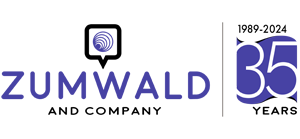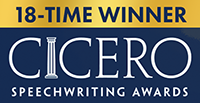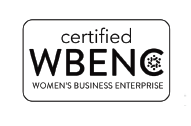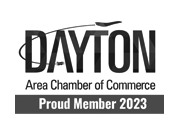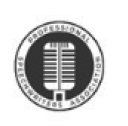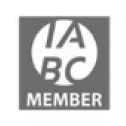How to start a virtual presentation
 Working on a speech for a virtual audience? Give your creative juices a jolt with these five ideas for a fresh approach to your opening lines.
Working on a speech for a virtual audience? Give your creative juices a jolt with these five ideas for a fresh approach to your opening lines.
Getting a virtual audience on the edge of their virtual seats is no small feat.
The best presenters agonize over their opening lines – and rightly so! – because they know the cold, hard truth:
If you don’t hook people right away in the virtual world, you’re doomed!
You’ll be the next pitiful victim of that Red Hot Escape Button On The Screen that reads (IN ALL CAPS):
LEAVE MEETING.
To help virtual presenters everywhere avoid this terrible fate, public speaking experts talking about how to start a virtual presentation tend to recite the same (vanilla) advice:
- “Tell a fascinating story.”
- “Share a memorable quote.”
- “Ask a compelling question.”
- “Reveal a fascinating statistic.”
And on and on.
Intuitive? Yes.
Helpful? Not so much.
Today, let’s go deeper than that in our discussion about how to start a virtual presentation.
I decided to dig out a series of virtual speeches written for clients over the past several months, look back at the startup of each speech and do a little analysis by asking a few questions:
- What was the chosen approach to the opening lines?
- How was the audience engaged?
- Why did it work?
I hope you’ll find these five snapshots helpful as you consider all your options for how to start a virtual presentation.
ANALYSIS: VIRTUAL SPEECH 1
 CHOSEN APPROACH TO THE OPENING LINES:
CHOSEN APPROACH TO THE OPENING LINES:
Recall a personal experience from long ago with a takeaway for today.
This speaker began by going back in time.
She described in vivid detail a personal experience she knew her audience could identify with since they had likely been through something similar.
The opening was a subtle reminder that the speaker and the audience had a lot in common.
The personal experience unfolded with an unexpected twist that taught the speaker a lesson – one she immediately related to her audience today.
HOW THE AUDIENCE WAS ENGAGED:
The speaker’s personal experience featured drama about a devastating event where courage and bravery were demonstrated – qualities the speaker had recently observed in her audience.
WHY IT WORKED:
After sharing her personal experience, the speaker turned the tables on her audience and made it all about them – not herself.
She praised them and thanked them.
Then – with her audience firmly in her corner – the speaker went on to make her persuasive case and convince the audience to take one specific action immediately, at the end of the presentation.
ANALYSIS: VIRTUAL SPEECH 2

CHOSEN APPROACH TO THE OPENING LINES:
Go down memory lane.
This speaker began with a flashback – a shared, emotional memory that he knew would move the audience to reflect, reminisce and smile.
HOW THE AUDIENCE WAS ENGAGED:
The speaker expertly used the facts of the matter in a way that evoked powerful feelings.
He delivered new insights by connecting the dots, one at a time, that he knew his audience may not have connected for themselves.
WHY IT WORKED:
By comparing and contrasting the past with the present, the speaker reminded the audience that they had accomplished something amazing – not only as individuals but also as a team.
This conclusion was a surprise to people in the audience, who immediately discovered that they were getting all the credit for something they did not realize they had done.
People in the audience felt proud!
As a result, they were primed, ready and absolutely tuned in to hear what the speaker would say next.
ANALYSIS: VIRTUAL SPEECH 3
 CHOSEN APPROACH TO THE OPENING LINES:
CHOSEN APPROACH TO THE OPENING LINES:
Reveal a back story.
This speaker began by choosing a well-known situation about two well-known brands familiar to everyone in his audience.
Then he took his audience behind the scenes and gave them a window into a world they did not know about.
He shared a crucial conversation that happened during an insider meeting to change the course of history.
HOW THE AUDIENCE WAS ENGAGED:
Revealing a back story made the audience feel special and exclusive since the speaker was making them privy to details they had not heard before.
WHY IT WORKED:
By providing this peek behind the curtain, the speaker reframed the audience’s assumptions about the trajectory of both brands.
The audience learned how “the road not taken” during this crucial conversation ultimately produced an epic fail.
The speaker used the back story to teach and to warn (since those who do not learn from history are doomed to repeat it themselves).
Hearing this back story and learning this lesson evoked a bit of fear – a powerful emotion that often drives people to change their thinking and ultimately their behavior.
ANALYSIS: VIRTUAL SPEECH 4
 CHOSEN APPROACH TO THE OPENING LINES:
CHOSEN APPROACH TO THE OPENING LINES:
Recount a familiar conversation.
This speaker began by reminding his audience of a common conversation they’ve had in the past.
Using dialogue, he quoted his audience’s familiar response to a standard question he’s asked them – time and time again – for many years.
But then – the speaker flipped that conversation on its head.
He took his audience’s familiar response – reframed it – and asked a new, challenging question meant to change the way they think about themselves.
HOW THE AUDIENCE WAS ENGAGED:
By first recounting a familiar conversation – and by using the audience’s own words – the speaker reminded his audience of the strong and common bond they share.
The audience could trust what the speaker was about to say. Their minds were open to hearing his message.
WHY IT WORKED:
The speaker was clever: By putting a fresh spin on the familiar, he compelled his audience to think differently about a routine opportunity and inspired them this time to act.
Then he repeated his freshly spun question for emphasis throughout the speech.
ANALYSIS: VIRTUAL SPEECH 5
 CHOSEN APPROACH TO THE OPENING LINES:
CHOSEN APPROACH TO THE OPENING LINES:
Be dramatic.
The speaker began by setting the scene, introducing a character and telling a true story chock-full of conflict and drama.
There was an extreme sense of urgency.
All the right things had to fall into place – but time was running out!
What would happen next?
HOW THE AUDIENCE WAS ENGAGED:
Details important to this story – the time of day, the weather, and the actual names of people, places and things – hooked the audience.
They could see, hear and feel what was happening.
They were part of the action.
WHY IT WORKED:
The drama was intense – the audience couldn’t help but stay with the story! – and the conflict was resolved in short order.
Something that seemed impossible in the beginning was achieved in the end.
How and why this victory was possible became the focus for the rest of the speech.
DON’T AGONIZE OVER HOW TO START A VIRTUAL PRESENTATION (HERE’S WHAT TO DO NEXT)
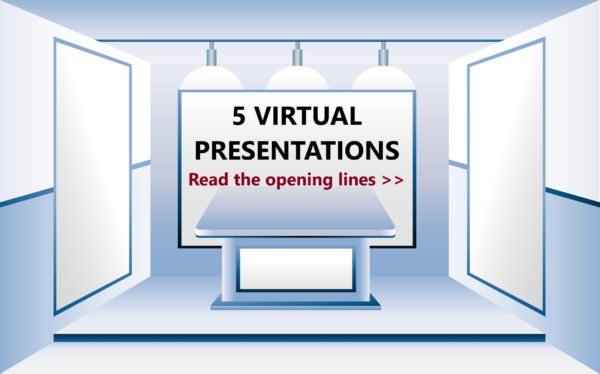 I have to confess: I rarely write the opening of a virtual presentation – or any speech, for that matter! – first.
I have to confess: I rarely write the opening of a virtual presentation – or any speech, for that matter! – first.
Instead, I like to begin by mapping out the rest of the speech.
Along the way, a good, creative idea for the opening lines always tends to emerge – and the best approach soon becomes crystal-clear.
But none of this happens without a bit of work.
If you’re at that point right now – agonizing about how to start a virtual presentation – use these five ideas to give your initial thinking a jolt:
- Recall a personal experience from long ago with a takeaway for today
- Go down memory lane
- Reveal a back story
- Recount a familiar conversation
- Be dramatic
Whatever your chosen approach to the opening lines, make sure it does what it needs to do:
Make sure it captivates your virtual audience.
And gets them on the edge of their virtual seats.
LEARN MORE!
Read the opening lines of the five virtual presentations analyzed in this post.
Need help with an upcoming virtual presentation?
Work with Teresa Zumwald, an award-winning speechwriter and speech coach.
Contact us today!
